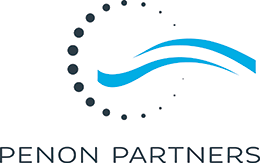Context
A multinational tech company decided to migrate its financial reporting to Power BI. Their existing reporting relied heavily on Excel, leading to several challenges:
- Inefficiencies and performance limitations – Time-consuming manual updates, repetitive work, and difficulties handling large datasets.
- Data Integrity Issues – High risk of human errors in formulas and inconsistencies due to multiple report versions.
- Lack of real-time insights and collaboration challenges – Reports quickly outdated and difficult to have real-time collaboration
- Security risks – due to reports being exchanged via email.
- Standardization – no harmonization across business units multiple reports for the same goal
To address these issues, the company decided to start with a Proof of Concept (PoC) using Power BI. They selected a specific project performance report as the first use case. This report was fully outside their ERP and other systems—100% Excel-based, making it an ideal candidate for testing the transition to Power BI.
Penon Partners consultants led the project, acting as a bridge between IT teams, responsible for data modeling and end users, who defined reporting needs and validated the outputs.
Here is how we approached it:
- Step 1 – Defining what we need to see
- We conducted workshops with stakeholders to define the KPIs
- We analyzed the current reports
- We designed clear and intuitive visuals and an optimized user experience (Key KPIs immediately visible, applied best practices in color coding, layout structuring, look and feel, and interactivity)
- Step 2 – Structuring the data
- We analyzed the current reporting to identify the source of truth
- We worked the data models with IT (IT involvement is critical for such projects) as well as a governance model
- We defined a framework to optimize data sources.
- Step 3 – Managing Testing and Adoption
- We developed a test plan to validate data accuracy.
- We organized feedback sessions with users to refine the solution (iterative approach)
- We trained key users first and then teams to utilize the tool.
Challenges to overcome during the execution:
- Lack of communication between IT and business teams → Penon Partners consultants facilitated communication, translating business needs into technical solutions and refining visuals for effective information presentation at multiple levels. Being Power BI certified, they leveraged the tool’s capabilities.
- Slow Power BI adoption → Penon Partners consultants provided targeted training on essential features of the Power BI service platform to end users and offered hands-on support.
Results
- Successful deployment of reports in 2 months, with automated and reliable KPIs.
- 40% reduction in time spent on manual reporting.
- High user adoption due to tailored support and training.
- A team motivated to continue using the tool and integrate more analyses into Power BI.
Conclusion
A Power BI project involves more than just technical implementation or dashboard design. Success relies on effective coordination between IT and end users. Experienced consultants from Penon Partners bridge IT and end users, structuring, accelerating, and securing projects to ensure optimal tool adoption and long-term business impact.

